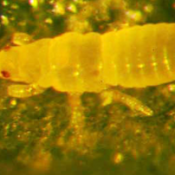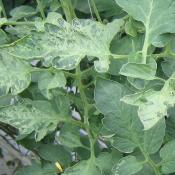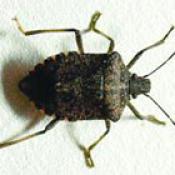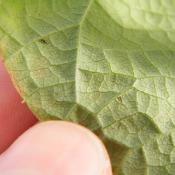Biosecurity Response
An exotic pest arrives – What happens next?
The arrival of an exotic pest or disease can rapidly impact on a grower’s livelihood together with that of their neighbours and others involved in the industry. Production, planting, harvesting and pest control may be disrupted, access to overseas markets may be lost or restricted, and security of product supply to local markets may result in loss of consumer confidence. The signing of the Government Industry Agreement (GIA), in which Government and industry jointly make decisions on how to deal with an unwanted pest detection, has meant the formation of pre-determined decision-making groups and protocols. This should enable well informed, well considered and strategic decisions to be made relatively swiftly. As a grower it is easy to think of Government Industry Agreements (GIA’s) as something that TNZ/VNZ/ONZ is involved with and looks after on your behalf. To some extent this is true, but when the proverbial hits the fan, you can be assured that individual growers will be as involved as your representative body.
In the event of a biosecurity response there will most likely be restrictions and requirements placed on growers. These restrictions and requirements may be voluntary or legislated and be requested by the Response Governance Group, a governance group made up of Ministry for Primary Industries and industry decision makers. These restrictions and requirements may include:
Control measures: dependent on the pest of concern, there may be a requirement to spray affected areas. Controls may involve destruction and disposal of contaminated crop.
Movement control: this will include things such as product, equipment and waste product movement restrictions within or between Controlled Areas so that the pest does not spread to unaffected areas. Movement may be allowable by permit which may require certain criteria to be met e.g. pest proofing. There may also be limited product storage on farm.
Additional surveillance and vigilance: crop inspections in areas where the pest has been found and in areas where the pest may be able to become established. This will be to determine whether or not it has spread or is present. It will also be a time for extra vigilance and reporting anything unusual or of concern.
Sharing records: sharing records will mainly be for purposes of traceability to identify where seeds or seedlings have come from and gone to, and to trace where any potentially affected crop has gone. Other information that may be requested could include planting and harvest dates and production locations e.g. GPS. Records may also help identify whether equipment or people (e.g. pickers) have been in areas where the pest has been found.
Increased communication: during an incursion there will be increased communication from TNZ/VNZ/ONZ and MPI in the form of emails and notifications on the TNZ/VNZ/ONZ/ website and possibly the media. In addition, information may be requested from you. Things such as property location, property size and crops grown as well as traceability are the types of information that may be asked for.
Upscaling farm biosecurity: includesthings such as increasing crop monitoring on your property, and upgrading signs, hygiene requirements and exclusion zones.
Involvement in response activities: the National Biosecurity Capability Network (NBCN) is an MPI initiative where those working in affected industries with relevant skills and who are interested can be contracted into the formal MPI and industry joint response activities.
At the same time as control measures are being implemented industry bodies such as TNZ/VNZ/ONZ will be doing its best to support grower members and minimise disruption.
This will include things such as
- providing up to date and timely information on the website for grower members
- agreeing movement controls with MPI e.g. a permit system or approved treatments
- identifying at-risk markets and strategically working with MPI to maintain or re-open them
- developing a timeline and checklist of recovery processes
TNZ/ONZ/VNZ will also be in discussions with MPI to plan the next steps and determine the best long-term course of action through a Response Governance Group. If the pest that has been found is covered by an Operational Agreement (OA) there will already be pre-determined decision-making protocols in place. If the pest is not covered by an OA, early discussions will be around determining the decision makers and processes through a Rapid OA. A Rapid OA is a process whereby response arrangements are agreed at the time of an incursion.
Discussions at the Response Governance Group level will consider eradication of the pest. This will examine the feasibility of eradication from a technical and financial perspective whilst taking the current situation into account. During these discussions, if time allows, TNZ/VNZ/ONZ will likely request feedback from members to ensure the best outcome for those they are representing.
Another area where TNZ/VNZ/ONZ will assist members will be compensation claims and other recovery measures. The main purpose of compensation is to provide incentives for early reporting of risk organisms and fairly compensate people when the Crown destroys their property using Biosecurity powers.
Compensation is calculated so that those affected are no better or worse off than any person whose property or goods are not directly affected by the exercise of Biosecurity powers. Loss is based on the value of property at the moment before the exercise of the powers commenced, or the actual cost was incurred. It may also take into account loss of profit for a period until normal production can resume. It is the responsibility of the individual or organisation incurring the loss to present a claim, which must be verified by evidence.
Compensation is only payable for the loss caused by taking Biosecurity action using powers under the Biosecurity Act. It is not payable for damage caused to property by the pest itself. A recent example of how compensation works in practice is with the ongoing Mycoplasma bovis response in which farmers received monetary compensation for the livestock culled as a measure to try to halt the spread of the disease. Additional recovery measures e.g. tax relief, providing business advice, mechanisms for retaining and/or encouraging retention or return of skilled workforce may be available for medium or large scale events and will be considered in respect of each event. This type of assistance may also be dependent on consultation and agreement with other Ministers.
In some responses there will be a lot of organisations involved in decision making. This, combined with the nature of these events will make decision making complex. Financial impacts and effects on the community will need to be taken into account whilst considering the technical aspects of dealing with an unwanted pest. Having as many people as necessary familiar with the processes, as much information as possible available, and as many individuals understanding their roles prior to an incursion will mean TNZ/ONZ/VNZ can represent their grower members quickly, confidently and effectively.





